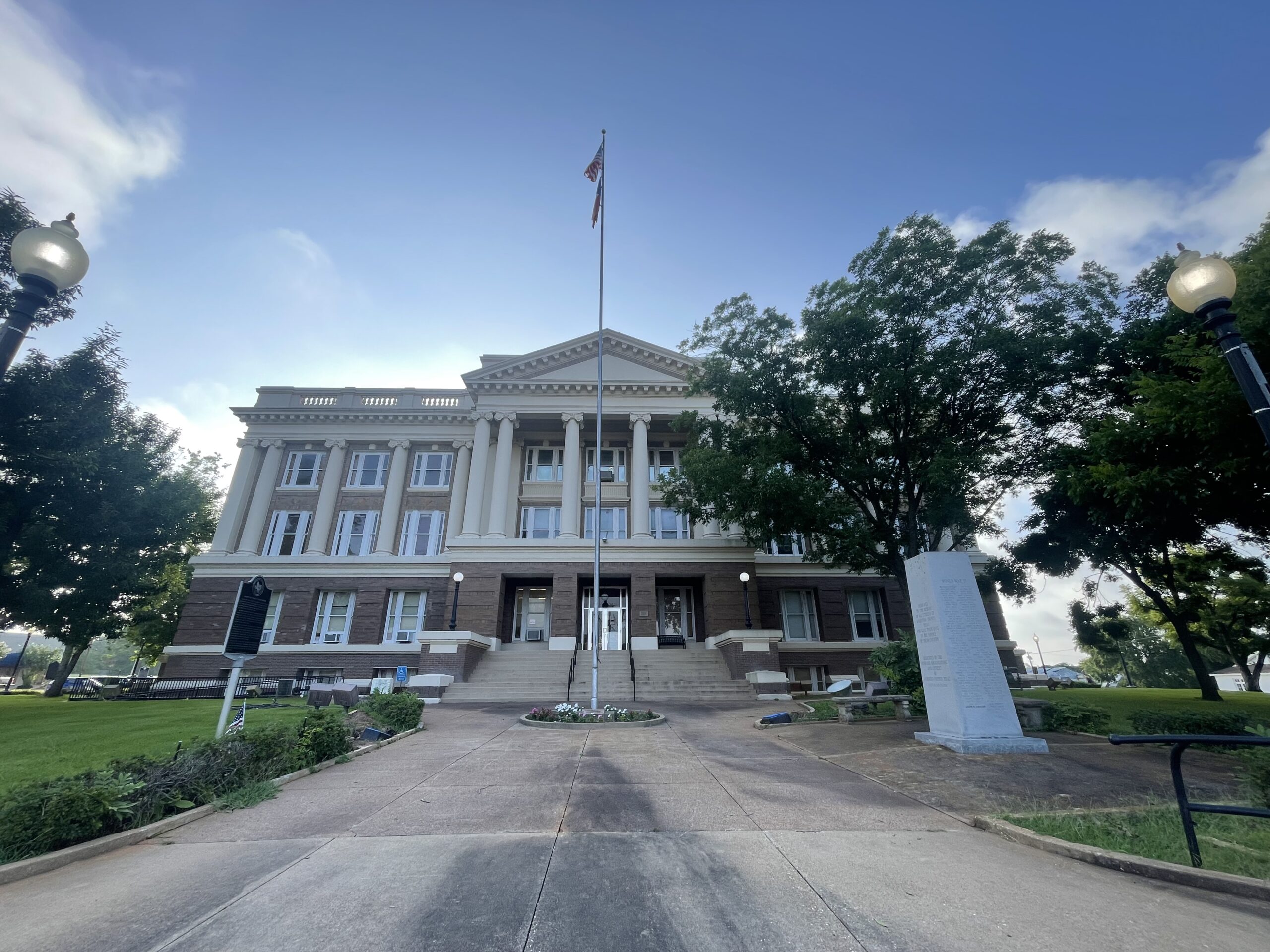Political Intelligence
Coveting Thy Neighbor's Water
Unsuitable for the Kids
In 1993, San Antonio civil rights lawyer Susan Zinn filed a class-action lawsuit against the state of Texas for failing to provide health care to its poorest children. The suit argued that Texas’ feeble Medicaid program isn’t providing children adequate care. The kids don’t have access to a few minor items—you know, little things, like doctor visits.
In response to the suit, Texas officials employed an age-old legal strategy—stall. They kept appealing, extending, and arguing the case before any court they could find, sometimes in defiance of all reason and common sense. After more than 13 years, the case is still going. Perhaps state officials hoped to stall the suit long enough for all the plaintiffs to age out of the children’s Medicaid program, and—presto!—the problem would be solved. Of course, there’s an unending supply of plaintiffs out there. (The case now involves 2.8 million children—a third of the kids in Texas).
Zinn and the kids have slogged through every level of the federal court system at least twice. The state has lost every ruling and nearly every appeal. At each stage, though, state officials have refused to pony up for kids’ health care and instead—like teenagers shuttling between their parents—chose to scurry before another federal judge hoping for a better answer. In the process, the state has defied its own 1996 written agreement to improve the Medicaid program, not to mention multiple rulings from a federal district judge, the Fifth Circuit Court of Appeals, and the U.S. Supreme Court.
Most recently, in 2006, the Fifth Circuit unanimously rejected yet another appeal. Attorney General Greg Abbott nonetheless appealed the case once again to the U.S. Supreme Court—even though the Supremes had already heard the case and ruled against the state in 2004. In January, the high court declined to hear it again. That means Texas may finally run out of legal filibusters. In April, Zinn will argue before federal District Judge William Wayne Justice, who’s handled the case since its inception, to order the state—for the third time—to provide adequate care.
If so, state lawmakers may have to account for increased Medicaid spending this session when they craft a state budget for 2008-2009. The need has gone up. The number of poor children in Texas has increased, while the children’s Medicaid program has deteriorated even more. Zinn says the number of kids who don’t receive regular checkups has risen every year since she filed the lawsuit. “It’s very important for the health of the state because we’re talking about the health of a third of the children,” she says. “If the defendants can’t even make sure the children get checkups, you hate to think what else is going on.”
A Tale of Two Reports
Alas, if only voters counted as much as shareholders. That’s the apparent lesson to be drawn from the early retirement of Sir John Browne, former chairman and CEO of British-based oil giant BP PLC. Browne resigned just a few days before a highly critical report on BP’s safety problems was released. The man who issued the report: James A. Baker III, the former secretary of state and now lobbyist-fixer to multinational corporations. Baker’s report determined that BP, which owns the Texas City refinery that exploded in 2005, killing 15 and injuring 170, has “significant” problems with its safety culture at all of its refineries, not just the Texas City plant. The report went on to say that BP has “not provided effective leadership in making certain its management and U.S. refining work force understand what is expected of them regarding process safety.” Of course, Browne denied that his resignation had anything to do with Baker’s report.
That may be so. But just for a moment, imagine that American voters mattered as much as BP’s shareholders. On December 6, Baker released another report, this one by the Iraq Study Group. The report skewered the policies of George W. Bush on nearly every page, although obliquely: “U.S. foreign policy is doomed to failure—as is any course of action in Iraq—if it is not supported by a broad, sustained consensus.” In a world where voters and shareholders were equal, the president would have recognized his many failures. And rather than continue his failed regime, he would have decided that the honorable thing to do was resign. Implausible, we admit. How about simply agreeing to change course?
Pro-life Positioning
One could have easily missed it. There at the bottom of the flier for this year’s Texas Rally for Life, the annual Austin gathering of Texas pro-life demonstrators, was a small-font admonishment: “No graphic images, please.” Historically a revered in-your-face tactic of grassroots abortion opponents, the oversized image of a gory fetus was deemed taboo this year. An increasing focus on women as the victims of abortion has replaced the dismembered baby. “Roe Hurts Women,” a reference to Roe v. Wade, the landmark Supreme Court case that legalized abortion, was the theme of this year’s march and rally in late January. It was echoed in chants, speeches, and the views of the anti-abortion rank-and-file. Indeed, the message has become the mantra of pro-lifers everywhere following a high-profile abortion-ban defeat in South Dakota and the capture of Congress by largely hostile Democrats.
“The fact that they’re trying this new language, these new slogans, is smart on their side,” says Sarah Wheat, public affairs director for Planned Parenthood of the Texas Capitol Region. Americans, she says, have soured on the extremist, confrontational style of many abortion opponents.
After a short march led by a sort of Praetorian Guard of robed, elderly members of the Knights of Columbus, the audience gathered for a rally at the Capitol. “Roe is on its way out!” shouted Father Frank Pavone, a featured speaker and Amarillo-based Catholic priest. “Roe v. Wade tried to present abortion as a benefit to women … It is not a benefit to women; it hurts women. We in the clergy know that, because in the morning the abortion mills do their dirty work, and then we pick up the pieces in the confessional booth in the evening.”
If a woman does not want to have the baby she carries, “Give the child to us,” Pavone said.
After he finished, organizers released 212 white balloons (the number of babies allegedly aborted every day in Texas) and 212 red balloons for the women who “will be in various stages of grief, denial, anger, and healing for the rest of their lives.”
One of those women, Ava Fulmer, a middle-aged African-American, wrapped up the event with the story of her own abortion at age 14 and eventual redemption as a born-again Christian. Fulmer is a member of Operation Outcry, a project of the San Antonio-based Justice Foundation, a pro-life group funded and founded by far-right sugar daddy James Leininger. Operation Outcry’s mission, according to its Web site, is to “end legal abortion by exposing the truth about its devastating impact on women and families.” The organization has collected thousands of affidavits from women who say they regret their abortions—a deliberate rebuke to the feminist-oriented, pro-choice camp.
Wheat calls for a little truth in advertising. Citing a long list of cuts to family planning that pay for such essential services as breast exams and testing for sexually transmitted diseases, she says abortion opponents until now could hardly be called pro-women. “Their agenda is incredibly detrimental to women’s health in Texas,” Wheat says.
“They can hold up signs that express care and concern for women, but their agenda does the exact opposite,” she adds.
Water Is for Fightin’
Call it waterlust. Texas’ aggressive water diviners have crossed the Red River into Oklahoma in search of blue gold. But the Okies say they ain’t selling; they haven’t a drop to spare. “We’re not prepared at this point in time to negotiate anything with Texas,” says Duane Smith, executive director of the Oklahoma Water Resources Board.
“Texas can get its water where it gets it work force—Mexico,” says Oklahoma state Rep. Jerry Ellis, a Democrat. (And we thought Texas legislators were politically incorrect!) In fact, the Oklahoma Legislature currently has a strict moratorium on out-of-state water sales, a ban that resulted from Texas’ unpopular attempt, five years ago, to muscle into the state. To overcome the stalemate, the Tarrant Regional Water District, which runs the water system for 1.6 million people in the Fort Worth area, filed suit on January 11 against Oklahoma water authorities. That same day, the Texas water district also applied for permits to take 460,000 acre-feet of water a year from three streams that flow into the Red River from southeastern Oklahoma. The lawsuit, before a federal district judge in Oklahoma City, alleges the moratorium is in effect an “embargo” in violation of the commerce clause of the U.S. Constitution. It accuses Oklahoma of having an “abundance” of surface water that the state is “wasting” by letting it flow down the river to the Gulf of Mexico. That sentiment doesn’t sit well with conservationists on either side of the Red River. “To say that water flowing down a river is a waste is just really disgusting,” says David Franklin, chair of the Oklahoma Sierra Club. Texas, he complains, is being less than neighborly to the three other states that rely on the river. Janice Bezanson, executive director of the conservation-oriented Texas Committee on Natural Resources, says the real waste is the refusal of Dallas-Forth Worth water authorities to implement serious conservation programs. She points out that the 50-year water plan for Region C, a 16-county area including the Tarrant Regional Water District, incorporates the assumption that the average Metroplex resident will continue to consume more than 225 gallons of water every day. The statewide average is 180 gallons per day.
So why is the water district suddenly so intent on grabbing Okie water? “Texas communities served by [the district] face a long-range water shortage,” the lawsuit says. Water from Oklahoma, it continues, is the “most practical and recommended water resource” to avert the deficit. Yet the Region C water plan doesn’t highlight Oklahoma as a high-priority source. By 2060 the plan recommends only 150,000 acre-feet per year from Oklahoma, a third of what the water district is seeking in its permit applications. The aggressive pursuit of out-of-state H20 may be a hedge against a possible failure to secure the proposed $2.2 billion Marvin Nichols Reservoir in East Texas, says Bezanson. Marvin Nichols, according to the Region C plan, would provide almost 500,000 acre-feet of water to three Dallas-Fort Worth water suppliers, including the Tarrant district, by 2030. But the reservoir is facing intense opposition from East Texans and state conservation groups who oppose the flooding of 72,000 acres of privately owned hardwood forest.


